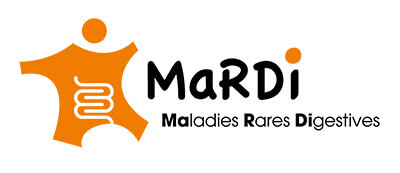Definition and clinical description
Chronic intestinal pseudo-obstruction (CIP) syndrome covers a set of situations in which an anomaly in the motricity of the digestive tract causes an occlusion (obstruction preventing movement of food, fluids and air) but with no actual physical blockage of the intestine.
The motricity of the digestive system is a complex process that depends on the muscles of the digestive tract walls, whose contraction is itself coordinated by the enteric nervous system.
In the case of CIP syndrome, a constitutional or acquired anomaly of the smooth muscle or of the enteric nervous system leads to abnormal motricity of the intestine with episodes of obstruction greatly hindering the normal nutrition of CIP patients.
Symptoms and prevalence
In France, there are currently about 50 children in treatment for severe CIP.
Clinical manifestations
Symptoms may appear at various ages. In certain forms, prenatal ultrasound can detect anomalies of the digestive tract or urinary tract (megabladder). Some children may display intestinal obstruction at birth, sometimes also affecting the motricity of the urinary tract, leading to distension of the bladder and kidney cavities. In older children, symptoms are sometimes major, with permanent or sometimes more insidious obstruction, combined with abdominal pain, vomiting (usually bilious), episodes of abdominal bloating and bowel problems with major constipation.
At worst, these episodes of digestive distension may lead to severe infectious complications (septicaemia by passage of microbes from the distended intestine into the blood flow).
Symptomatology may be continuous, with progressive worsening, or on the contrary, it may involve successive flare-ups. In the latter situation, frequent, closely spaced flare-ups make it impossible to obtain sufficient nourishment in order to meet the child's growth needs. Malnutrition and delayed growth thus gradually set in.
Diagnostic method(s)
The clinical diagnosis is confirmed after testing, involving gastrointestinal manometry, bowel transit time measurements, X-ray testing and histological examination of the affected intestinal wall. If the radiological and functional tests show no mechanical obstruction, the diagnosis of CIP is confirmed.
Care and treatment
Care for the disease is multi-disciplinary (gastroenterologists, pain specialists, psychologists). It depends on the nature of the disease and includes dietary measures, medication with prokinetics, treatment of complications, and surgery.
Genetic analysis
The majority of cases are sporadic. Only 5% of observations are in the familial category. In the latter situations, the genetic location is unknown, except for Steiner’s syndrome (type-2B multiple endocrine neoplasia).


